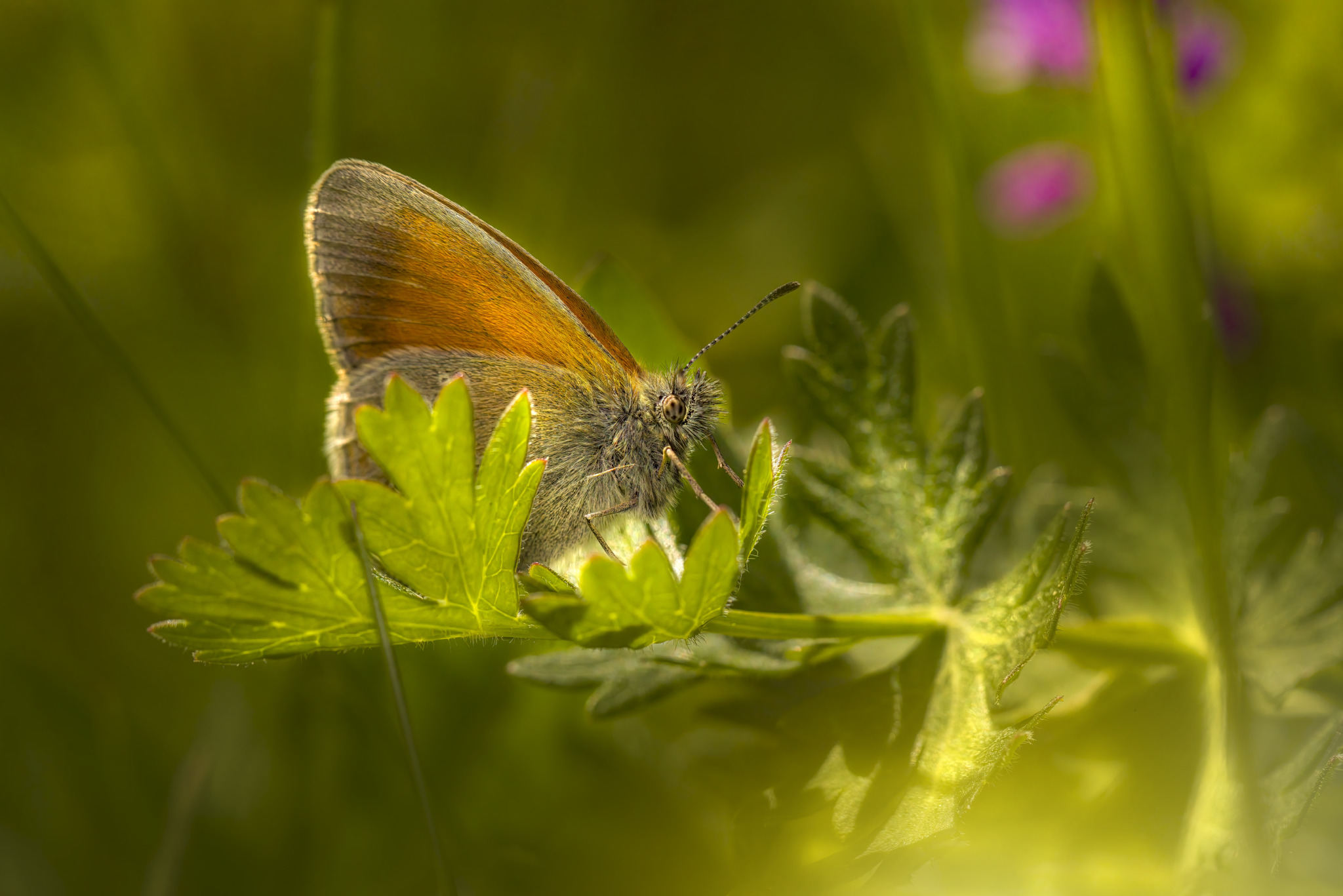The Chestnut Heath (Coenonympha glycerion) is a small butterfly belonging to the family Nymphalidae. It is commonly found in grasslands across Europe and parts of Asia. Here’s a brief overview:
Physical Description:
- Wingspan: 32–38 mm.
- Upperwings: The upper side of the wings is brown, with very few distinctive markings.
- Underside: The underside of the hindwings is more distinctive, featuring a chestnut-brown color with small white-ringed black eyespots and a thin white line running across the wings.
- Body: The body is hairy, with a robust appearance.
Habitat:
- The Chestnut Heath is typically found in sunny, dry grasslands, meadows, and forest clearings. It prefers areas with a mix of grasses and sparse vegetation, often in mountainous regions or on slopes.
Lifecycle:
- Eggs: Eggs are laid on grasses such as Festuca and Brachypodium species.
- Caterpillar: The larvae feed on the leaves of grasses and are green in color with a darker dorsal stripe.
- Pupa: The pupation occurs close to the ground, often hidden in vegetation.
- Adult: Adults are on the wing from June to August, depending on the region.
Behavior:
- Flight: The flight pattern of the Chestnut Heath is low and fluttery, typical of many grassland butterflies.
- Feeding: Adults feed on nectar from a variety of flowers, including thistles and other meadow plants.
- Territorial: Males are often territorial and can be seen patrolling their chosen area, chasing away rivals.
Conservation:
The Chestnut Heath is not currently considered endangered, but its populations can be sensitive to habitat loss due to agricultural intensification and changes in land use. Conservation efforts focus on preserving the natural grassland habitats it depends on.
The Chestnut Heath is a charming butterfly with its subtle brown wings and delicate spots, making it a lovely sight in the European countryside.
The Chestnut Heath (Coenonympha glycerion) is a charming butterfly species belonging to the family Nymphalidae. It is known for its subtle beauty and distinctive markings, making it a beloved sight in grassland habitats across its range.
Here are some key features and characteristics of the Chestnut Heath:
- Appearance: The Chestnut Heath butterfly has a wingspan of about 28 to 32 millimeters (1.1 to 1.3 inches). Its wings are primarily brown with subtle orange and chestnut-colored markings, giving it a warm and earthy appearance. The underside of the wings is lighter in color, with intricate patterns and delicate markings that provide camouflage when the butterfly is at rest.
- Habitat: Chestnut Heath butterflies are typically found in open grasslands, meadows, heathlands, and other sunny habitats with plenty of vegetation. They prefer areas with tall grasses and flowering plants, where they can feed on nectar and find suitable breeding sites.
- Range: The Chestnut Heath is distributed across Europe, Asia, and parts of North Africa. It is most commonly found in central and southern Europe, including countries such as France, Spain, Italy, Greece, and Turkey.
- Flight Period: The flight period of the Chestnut Heath varies depending on its location, but it generally occurs from late spring to early autumn. In warmer climates, it may be active year-round, while in cooler regions, it is more likely to be seen during the summer months.
- Behavior: Chestnut Heath butterflies are relatively sedentary and tend to stay within their preferred habitat, flying low to the ground and feeding on flowers. They may also bask in the sun to warm their bodies before taking flight.
- Life Cycle: Like other butterflies, the Chestnut Heath undergoes a complete metamorphosis, with four life stages: egg, larva (caterpillar), pupa (chrysalis), and adult. The larvae feed on grasses and other low-growing plants, while adults feed primarily on nectar from a variety of flowering plants.
- Conservation: While the Chestnut Heath is not considered globally threatened, it may face localized threats from habitat loss, fragmentation, and agricultural intensification. Conservation efforts focused on protecting and restoring grassland habitats, reducing pesticide use, and promoting sustainable land management practices can help ensure the survival of this species and other grassland butterflies.
Overall, the Chestnut Heath butterfly is a delightful and important species that contributes to the beauty and biodiversity of grassland ecosystems. Its subtle yet distinctive appearance and ecological significance make it a valuable subject for conservation and appreciation in the natural world.
Views: 626
Subscribe to the newsletter:
